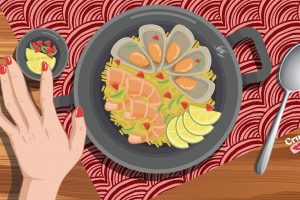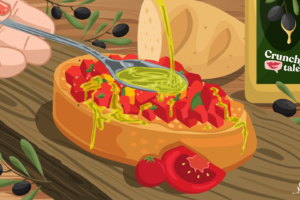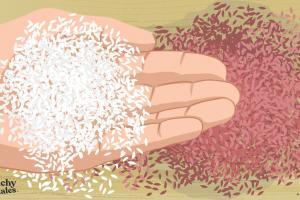5 Essential Knives For Chopping Like A Pro
Good quality knives make a big difference in any cook’s experience. Having a couple of reliable ones that you can count on will give you the confidence you need when preparing even the most complicated dishes. However, how many knives do you really need in your kitchen? Far fewer than you actually think.
The must-have knives
With so many knives to choose from, it can be difficult to know where to start with and creating your personal collection. I have accumulated all kinds of knives along the way including a flexible filleting knife and many others, but essentially the following list will cover most jobs easily as long as the straight-bladed knives are sharp.
Whether you’re an accomplished chef or just getting started, don’t choose a knife just because you like the look of the handle; it is about whether the handle will feel comfortable during usage.
A big cook’s knife
It’s essentially an elongated triangle for chopping and slicing. Used flat, it can also be good for crushing. The size needs to be right for your hand although usually, it varies between 8 or 9 inches to 13 or 14 inches. The weight is all-important as you simply won’t be able to use it effectively if it is either too heavy or too light and this is dependant on your own strength and what feels right in your grip. It really is about what feels best in your hand and I would recommend Gustav Emil Ern for this knife, although so many other brands exist. One thing I would point out is that the indentation at the base of the blade and the top end of the handle (essentially the corner of the knife) is especially important when considering how the knife feels in your hand and this will be determined largely by your finger size as they curl around the handle.
A small cook’s knife
It’s the same sort of shape as its big brother and usually 7 to 9 inches in length. This is a very useful little utensil for doing all the smaller jobs that the bigger knife can’t achieve – at least not safely! This knife is for peeling, and for slicing very small items like a clove of garlic.
A small knife with a serrated blade
Usually, it has the same shape as the small cook’s knife although sometimes this knife has a rounded tip instead of triangular. Either way, this knife is essential for cutting anything that has a high level of citric acid (such as lemons and other citrus fruits, tomatoes, strawberries, aubergines and many others). This is because the citric acid will blunt the straight blade on a knife super quickly.
When I have to travel by air to work as a chef in far-flung places I can sometimes put my precious knives on board just as long as they are blunt. To achieve optimum bluntness I spend time cutting up lemons before I pack them! Expensive kitchen knife companies like Global have a specific tomato knife in their range to cover this aspect, but you basically just need a good quality serrated knife.
A really good quality bread knife
I think this is really important because there is nothing more frustrating than trying to cut bread, especially good bread, with a knife that is not up to the job. I love my bread and so I love my breadknife! Opinel makes the very best bread knife I have ever come across.
A palette knife
This is a flat, blunt instrument that will make turning things over in a pan, easing cakes out of a tin and sliding biscuits off a tray much easier. In truth, I like to have two, a large and a small one, to use in different situations.
…and a really good, sharp pair of kitchen scissors
I find that scissors are absolutely essential in the kitchen, so many jobs are made so much faster when you can use scissors. Think fish, squid, chicken, herbs and many, many more. The Italian city of Campobasso is where scissors have been expertly made since the Middle Ages. So I always like to give the little known region of Molise a nod and use scissors that come from there. Sentimental? Yes of course! But also super-efficient and long-lasting. They do tend to get lost though. Make sure, whatever type you buy and wherever they are from, that they are strong and easy to sharpen.
How to look after your knives
Make sure you keep them clean and sharp. Never put them in the dishwasher, as the detergents used can easily damage the sharp blade. In an ideal world, assuming the knife is not greasy, it should be washed in cold water, dried and put away in such a way that it isn’t touching anything that might blunt or damage the blade, or be dangerous to your fingers. The wall-mounted magnet strip is my preferred choice, although a knife block will also work.
When it comes to sharpening, unless you are really proficient, I would always recommend you have your knives regularly sharpened by a professional because doing it wrong will blunt and could damage your blade. Carbon steel knives are much easier to sharpen, although not so widely used these days because they have a tendency to rust and look marked if they are not cared for properly. To learn how to sharpen a knife well, you need hours of practice and I would advise you to sign up for a tuition course if possible.
Enjoy using your trusty knives and be brave and careful! Generally, it is less painful to cut yourself on a sharp blade than a blunt edge and a sharp knife will save you so much time and effort, they are your most important kitchen tools.





